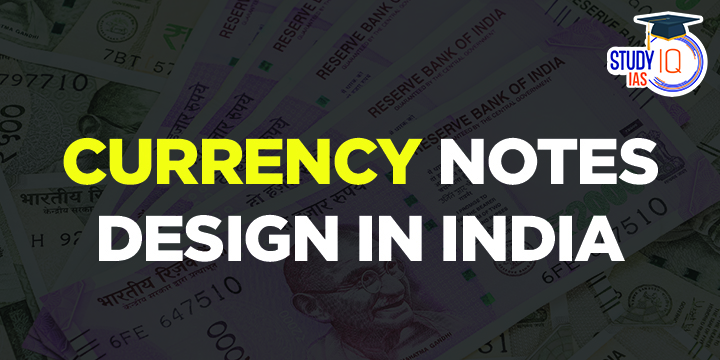Table of Contents
History of Currency Notes in India
- Designing coins and currency has been seen as a symbol of sovereignty since ancient times.
- The coins during the rule of Samudragupta of the Gupta empire, 335–375 CE, bore images of his valour.
- Kushana empire has been credited with introduction of gold coins in India.
- Viceroy Canning first introduced paper currency in Indian subcontinent by the Paper Currency Act of 1861.
- The Act of 1861 authorised the Presidency Banks to enter into agreements with the Secretary of State for becoming agents for the issue, payment and exchange of promissory notes of the Government of India.
- The first set of British India notes were the ‘Victoria Portrait’ Series issued in denominations of 10, 20, 50, 100, 1000 manufactured at the Laverstock Paper Mills.
Who Designs Currency Notes in Independent India?
- The Reserve Bank has the sole authority to issue banknotes in India.
- Reserve Bank, like other central banks the world over, changes the design of banknotes from time to time, in consultation with the Central Government.
- From 1947 until the establishment of the republic in 1950, RBI continued to issue extant notes of the colonial rule.
- At the outset it was felt that the King’s portrait be replaced by a portrait of Mahatma Gandhi, but the consensus moved to the choice of the Lion Capital at Sarnath in lieu of the Gandhi Portrait.
- In 1953, Hindi was displayed prominently on the new notes.
- In 2000 and 2005, security features like changed watermark, windowed security thread, latent image, intaglio features, wide colour shifting machine readable magnetic windowed security thread were introduced for several denominations.
- In 2015, certain new features such as bleed lines on higher denominations and exploding numbers were introduced.
According to The Reserve Bank of India Act, 1934:
-
- “The design, form, and material of bank notes shall be such as may be approved by the Central Government after consideration of the recommendations made by the [RBI’s] Central Board”
India’s currency note printing presses:
- Owned by the Government of India- in Nasik and Dewas
- Owned by the RBI through its wholly owned subsidiary, Bharatiya Reserve Bank Note Mudran Ltd (BRBNML)- in Mysore and Salboni
Coinage:
- The Central government has the power of designing and minting coins in various denominations according to the Coinage Act, 2011.
- GoI owned mints: Mumbai, Hyderabad, Kolkata and Noida.
The Process of Designing Currency Notes
- The RBI internally develops designs, and this is put before the RBI’s Central Board.
- After making necessary changes in the design of a currency note, the RBI recommends it to the central government.
- The final approval is the prerogative of the Central Government.

The RBI’s Currency Notes Management
- The Central bank determines the number of banknotes that are likely to be needed denomination-wise in a year and orders the various currency printing presses to provide them.
- Notes that are received back from circulation are examined, after which those fit for circulation are reissued, while the soiled and mutilated notes are destroyed.
|
Types of Notes Issues so Far: |
| Ashoka Pillar Banknotes: In the 1949 Re. 1 note, the portrait of King George was replaced with the symbol of the Lion Capital of the Ashoka Pillar at Sarnath in the watermark window. |
| Mahatma Gandhi (MG) Series, 1996: Notes of this series bear the portrait of Mahatma Gandhi on the front side, in place of the symbol of Lion Capital of Ashoka Pillar, which was moved to the left. |
| Mahatma Gandhi series, 2005: New security features were included in this series. |
| Mahatma Gandhi (New) Series, 2016: The “MGNS” notes highlight the cultural heritage and scientific achievements of the country. Being of reduced dimensions, these notes are more wallet friendly, and are expected to incur less wear and tear. The colour scheme is sharp and vivid. |


 Daily Quiz 18 April 2025
Daily Quiz 18 April 2025
 OSSC CGL Syllabus 2025 and Exam Pattern ...
OSSC CGL Syllabus 2025 and Exam Pattern ...
 AI and its Regulation in India, Limitati...
AI and its Regulation in India, Limitati...





















